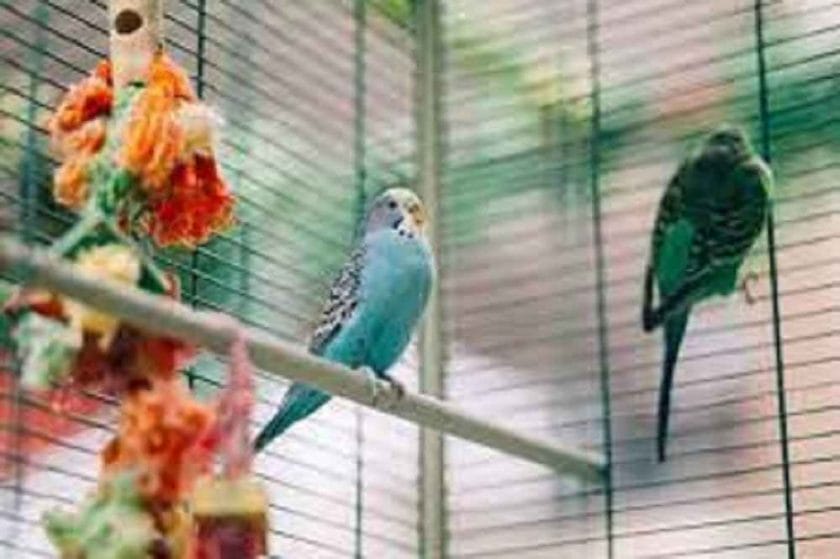Acrylic paint is a popular choice for artists and crafts enthusiasts, known for its versatility and quick drying time. But as much as it is popular among artists, it is important to consider the safety of other creatures, especially birds.
In this article, we will examine whether acrylic paint is safe for birds or not and what precautions should be taken when using acrylic paint around birds.
Understanding Birds and their Vulnerabilities
Birds are fascinating creatures that are often kept as pets or admired from a distance. However, it is important to understand their biology and their vulnerabilities to harmful chemicals.
Birds have a unique respiratory system that makes them more susceptible to toxic substances in the air. They also have delicate skin and feathers, which can easily absorb harmful chemicals.
Exposure to Harmful Chemicals
Birds can be exposed to harmful chemicals in many ways, including inhalation, ingestion, or through direct contact with the skin or feathers.
Common household items such as cleaning products, pesticides, and even certain types of paint, can pose a significant risk to birds. It is important to understand the potential dangers and take steps to protect them.
Understanding the Toxicity of Acrylic Paint
Acrylic paint is made from a combination of chemicals, including pigments, resins, and solvents. While the pigments used in acrylic paint are generally considered safe, the solvents used to dissolve the resin can be harmful to birds.
Solvents such as toluene, xylene, and ethyl acetate can cause respiratory irritation and other health problems in birds.

Safety Concerns of Acrylic Paint for Birds
The safety concerns of acrylic paint for birds are centered around the toxicity of the solvents used in its composition.
When inhaled, these solvents can cause respiratory irritation, headaches, dizziness, and in severe cases, neurological damage. Direct contact with the skin or feathers can also result in irritation and potentially harmful chemical absorption.
Precautions and Safety Measures
To ensure the safety of birds when using acrylic paint, it is important to take some precautions and follow safety measures.
Tips for Safe Handling of Acrylic Paint
- Use paint in a well-ventilated area, preferably outdoors
- Avoid using paints with high levels of solvents or other toxic chemicals
- Wear protective gloves and masks to prevent skin and respiratory irritation
- Store paints properly and keep them out of reach of birds
- Clean up spills and splatters immediately to prevent contamination
Alternative Safe Paints for Birds
- Water-based paints are generally considered safe for birds as they contain fewer toxic solvents
- Natural and non-toxic paints made from ingredients such as vegetable dyes, clay, and beeswax are also safe alternatives
- When in doubt, it is always best to choose paints that are specifically labeled as safe for birds
Keeping Birds Safe from Exposure
- Keep birds in a separate room or area when using acrylic paint or any other potentially toxic substance
- Provide plenty of fresh air and ventilation in the bird’s living space
- Regularly wash and groom birds to remove any chemicals that may have accumulated on their skin or feathers

Conclusion
In conclusion, it is important to be aware of the safety concerns surrounding acrylic paint and its potential impact on birds. By following the tips and safety measures discussed in this article, you can help keep birds safe and protected.
Summary of Findings
- Acrylic paint contains solvents that can be harmful to birds
- Birds are susceptible to harmful chemicals through inhalation, ingestion, and direct contact
- Precautions, such as using alternative safe paints, proper storage, and ventilation, can help keep birds safe
What is the difference between acrylic paint and water-based paint for birds?
Acrylic paint contains solvents that can be harmful to birds, while water-based paint contains fewer toxic solvents and is generally considered safe for birds.
Can birds get sick from inhaling the fumes of acrylic paint?
Yes, birds can get sick from inhaling the fumes of acrylic paint as it contains solvents that can cause respiratory irritation and other health problems in birds.
Is it safe to use acrylic paint around birds even if they are not directly exposed to it?
It is best to keep birds in a separate room or area when using acrylic paint or any other potentially toxic substance to prevent accidental exposure.
Is it necessary to clean and groom birds after being in the same room as acrylic paint?
Yes, it is important to clean and groom birds after being in the same room as acrylic paint. This will remove any chemicals that may have accumulated on the skin or feathers of the bird.
Can acrylic paint be safely used for bird toys or birdhouses?
It is best to avoid using acrylic paint on bird toys or birdhouses, and instead opt for alternative safe paints that are specifically labeled as safe for birds.
If it is necessary to use acrylic paint, proper precautions should be taken to protect birds from exposure to its fumes and to clean the items thoroughly after use.
